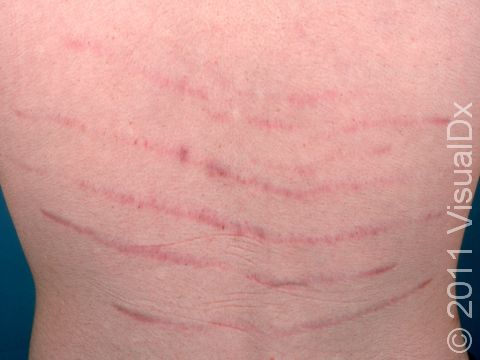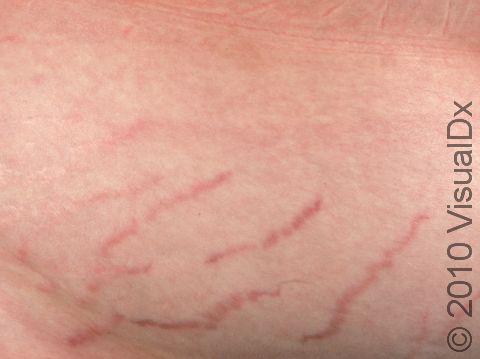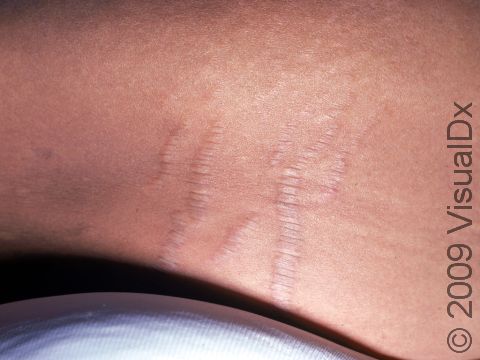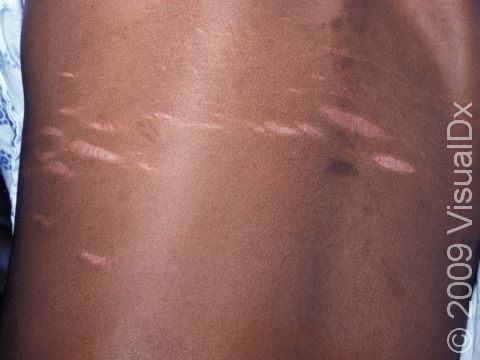Stretch Marks (Striae)
Stretch marks (striae) are stripe-like skin marks that develop as a result of rapid weight gain or loss, when the skin is stretched, and as a result of some diseases.
Who's At Risk?
- In children who are not yet teens (adolescents), most stretch marks occur in those who are overweight.
- In the US, almost all pregnant women, 70% of adolescent women, and 40% of adolescent men have stretch marks. These are due to growth and stretching of the skin.
- Stretch marks are more common in women, occurring equally in people of all races.
- Stretch marks are also seen with prolonged use of oral or topical corticosteroids, disease of the adrenal gland, or rare genetic disorders.
Signs & Symptoms
When due to being overweight (obesity) in children, stretch marks are usually seen on both sides of the body (symmetrically); they are most visible on the thighs, arms, and belly and are sometimes seen over the back, buttocks, and knee regions.
Stretch marks may be widespread, or they may appear in other locations in people who use corticosteroids or have certain diseases.
Stretch marks change in appearance with time:
- In early stages, they are faint, pink, parallel, band-like marks arranged in a line, and they might itch slightly.
- They gradually enlarge and become red to purple, often with a wrinkled surface.
- Finally, they become white, slightly depressed, crepe-paper-like linear marks, 1–10 mm wide and many centimeters long.
Self-Care Guidelines
- Stretch marks appearing during the teen years (adolescence) often improve in appearance with time. No treatment is needed.
- Where applicable, stop using topical corticosteroid creams in the child’s skin area.
- Over-the-counter creams are useless.
- If the stretch marks are cosmetically distressing, early red areas can be treated, but these treatments would not be covered by insurance.
Treatments
- If the appearance of the early lesions is bothersome, tretinoin cream may improve the appearance.
- Laser treatments and chemical peels may also be used.
- If the diagnosis is not certain, a biopsy and blood tests might be done.
Visit Urgency
See your child’s doctor if stretch marks appear without an obvious cause, such as rapid weight gain or adolescent growth.
References
Bolognia, Jean L., ed. Dermatology, pp.1542-1543. New York: Mosby, 2003.
Freedberg, Irwin M., ed. Fitzpatrick’s Dermatology in General Medicine. 6th ed. pp.1028. New York: McGraw-Hill, 2003.
Last modified on August 16th, 2022 at 2:44 pm

Not sure what to look for?
Try our new Rash and Skin Condition Finder





